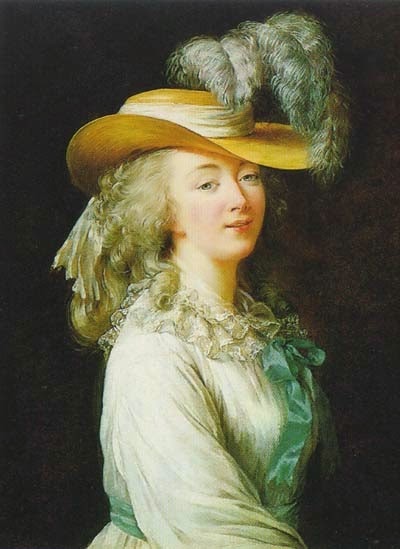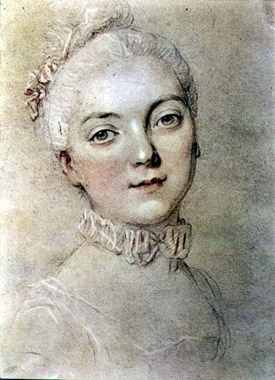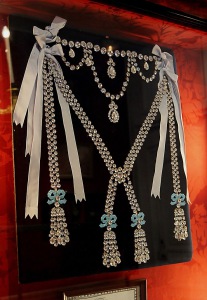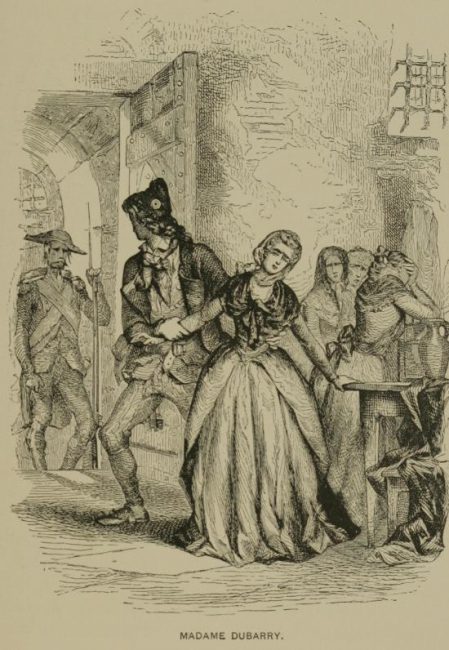
Madame Du Barry (1743 – 1793), portrait by Élisabeth Vigée Le Brun in 1781
On April 22, 1769, Jeanne Bécu, comtesse du Barry, better known as Madame du Barry, was introduced at the French court. Originally being only a seamstress, Madame du Barry should become Maîtresse-en-titre of Louis XV of France and the most powerful woman in France.
From Street Seller to Courtesan
Madame du Barry was born in Lorraine, France and had to support herself financially at the age of 15 or 16. It is assumed that she had started selling rather cheap jewelry on the streets of Paris and continued her career as a companion to an elderly widow, Madame de la Garde. Madame du Barry, back then still known as Jeanne Bécu, was considered highly attractive and her beauty also drew attention to Jean-Baptiste du Barry around 1763. He owned a casino and made Jeanne his mistress. He supported her career as a courtesan in Paris and made it possible for her to take several aristocratic men as brief lovers or clients. Jeanne became widely known across Paris as Mademoiselle Lange. To her clients belonged numerous aristocratic men and Jean du Barry started to see a huge potential of influencing the politics of Louis XV. In order to become a maîtresse-en-titre, Jeanne had to get married to Comte Guillaume du Barry.
Moving to the King’s Quarters

A portrait of Madame du Barry by Francois-Hubert Drouais
Jeanne moved in the King’s quarters and had a hard time fitting in. Many of the nobility would not accept the fact that a woman of the street had the audacity to interact with those above her station. Still, it is assumed that her husband often reminded her to speak of presentation with the king. After Jeanne had finally been presented to the Court at Versailles, she started to make friends and quickly accustomed herself to living in luxury. Madame du Barry became known as a very extravagant woman, who wore diamonds covering her neck and ears combined with extremely costly dresses. She became the king’s maîtresse déclarée and historians assume that she made as many friends as enemies at Court.
Jeanne’s Golden Age and the Affair of the Diamond Necklace
Duchesse de Grammont should become her most bitter rival, who did not hesitate to develop several plans to remove Jeanne with her brother. Still, Jeanne’s power in Court grew stronger as Choiseul sided with the Spanish against the British for possession of the Falkland Islands. When Jeanne found out about it, she exposed the news to the king, which resulted in the removal of Choiseul and his sister. This period is regarded as Jeanne’s golden age and her family received great benefits from her position. She became well known as a supporter of artists and the king often praised her in front of his acquaintances. Unfortunately for her, she grew increasingly unpopular because of the king’s financial extravagance towards her. For instance, Louis XV requested that Parisian jewellers Boehmer and Bassenge create an elaborate and spectacular jeweled necklace for du Barry in 1772. The necklace was neither completed nor paid for when the king passed away, which triggered a huge scandal. Queen Marie Antoinette was wrongly accused of bribing the Cardinal de Rohan, Archbishop of Strasbourg in the Alsace, to purchase it for her. These accusations would figure prominently in the onset of the French Revolution. This incident became well known as the famous Diamond Necklace.[4]

The diamond necklace commissioned by Louis XV for Madame du Barry
After the Death of the King
After the death of Louis XV, Jeanne was quickly exiled to the Abbey du Pont-aux-Dames near Meaux-en-Brie. After about one year, she was allowed to visit the surrounding countryside on condition, she returned and slept behind the abbey’s walls at sundown. Jeanne started to slowly recover and even managed to purchase some property. Later on, she fell in love with Henry Seymour while having a liaison with Louis Hercule Timolon de Cossé, Duke of Brissac. Brissac was captured while visiting Paris, and was slaughtered by a mob during the French Revolution and an angry crowd threw his head through her open window. Madame du Barry herself was arrested in 1793 for treason and beheaded by means of the guillotine on 8 December in the same year. Her last words to the executioner were
“Encore un moment, monsieur le bourreau” (One more moment, Mr. Executioner).

Madame du Barry being taken away to the scaffold, by Tighe Hopkins, The Dungeons of Old Paris, 1897
Benedetta Craveri: “Madame Du Barry’s Enduring Legacy“, [6]
References and Further Reading:
- [1] Memoirs of the Comtesse Du Barry; with intimate details of her entire career as favorite of Louis XV
- [2] Madame Du Barry at Britannica
- [3] Madame Du Barry at Madame Guillotine
- [4] The Affair of the Diamond Necklace, SciHi Blog
- [5] Madame du Barry at Wikidata
- [6] Benedetta Craveri: “Madame Du Barry’s Enduring Legacy“, The Frick Collection @ youtube
- [7] “Jeanne Bécu, Comtesse du Barry”. Madame Guillotine. 2 May 2020.
- [8] “The Diamond Necklace Affair”. Marie Antoinette Online.
- [9] “Madame du Barry: From Prostitute to King Louis XV’s Last Mistress, and Died as Famous Victim of the French Revolution | Feature Series | THE VALUE | Art News”. TheValue.com.
- [10] Haslip, Joan (1992). Madame du Barry: The Wages of Beauty. New York: Grove Weidenfeld.
- [11] Loomis, Stanley (1959). Du Barry: A Biography. Philadelphia: Lippincott.
- [12] Timeline of Mistresses of Louis XV of France, via DBpedia and Wikidata





